
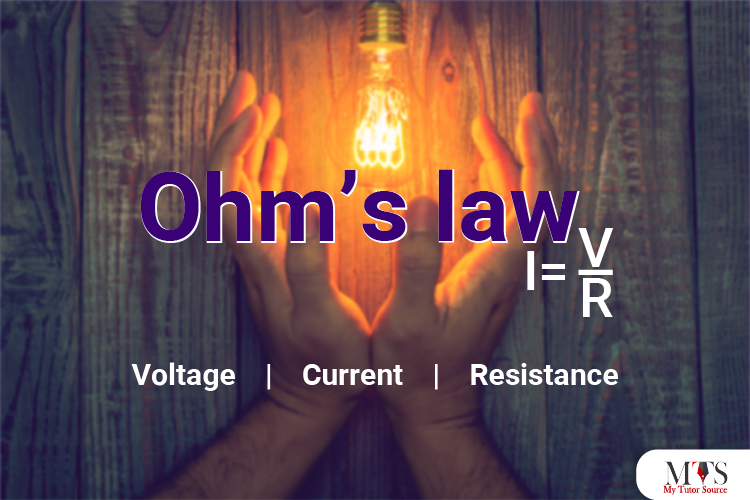
Ohm’s law states that there is a relationship between the current, voltage, and resistance in the way that when current is passing through any two given points, then that current or electricity is directly proportional to the voltage across them. It is also inversely proportional to the resistance of the circuit. Other physical factors like temperature and pressure should remain constant in the given situation. This phenomenon is called ohm’s law.
Learn more about it in detail from our private physics tutors.
Back in the year 1817, renowned German physicist Georg Simon Ohm was busy teaching and experimenting to navigate the areas of current and electricity. Georg Ohm would practice his knowledge of electromagnetism at the school laboratory until he established the major relation between different components of an electric field in an electric circuit.
During his experiments, he discovered that there is a relationship between different aspects of an electric field. The phenomenon that is known to us today that the voltage, resistance, and the current have a relationship that facilitates the workings of these factors with each other was formally published in 1827 after the findings of Georg Ohm.
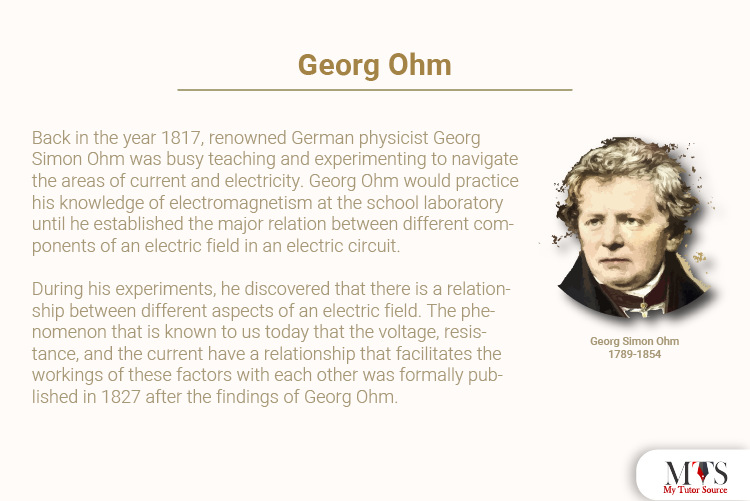
Mainly it was noted that the three quantities of a circuit that are voltage, current, and resistance, work in accordance with each other. The voltage allows the movements of electrons in a circuit, whereas the current determines the rate of movement of the electrons, and in the same circuit, there is resistance that determines how well the electrons will exhibit movement in a particular material.
German physicist Georg Ohm was able to discover how current flows differently through different electrical devices owing to the role of voltage and resistance in it. Doubling the voltage in some conductors led to a doubled-up amount of current in the circuit, whereas increasing the resistance led to a decrease in the flow of current in the circuit.
This is how the direct relationship between current and voltage whereas the indirect relationship between the resistance and current was discovered.
Mathematical expression
This relationship was mathematically expressed as V=IR.
I.e. Potential difference (Voltage) = current X resistance
Here the current is measured in ampere, the voltage in volts, and the resistance is measured by the SI Unit ohms with the symbol Ω
In this expression, I is known to be the current that is flowing through the circuit, V is the voltage or the potential difference across the two points of the circuit, whereas R is known to be the resistance that is present in the circuit.
If we know the value of current and resistance, then the voltage can be found out by simply multiplying the current and resistance.
Conversely, this expression can also be stated in other ways like
We can divide voltage and resistance to find the value of current, or we can divide the voltage and current to find the value of resistance.
The main components of ohm’s law are current, voltage, and resistance. These make up the whole concept behind the working principle of ohm’s law. Here we have discussed the details of these three components and how they affect the different aspects of electrical power.
An electric field is known as the type of physical medium or field that is covered by different charges all over. An electric field is created when there is a potential difference between two points, creating a flow of current. When there is current due to potential difference present in a circuit, then an electric field is created.
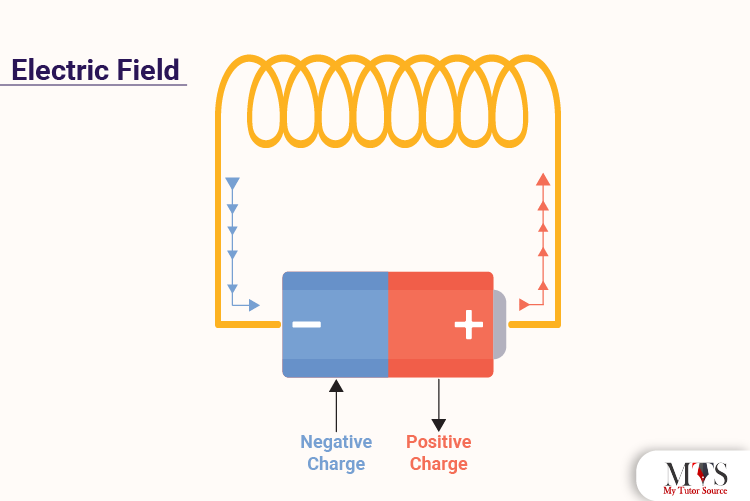
Current is basically the rate and flow of movement of electrons in a given electrical circuit. When electrons are loosely bonded to each other in a medium, then they are allowed to freely travel from one spot to the other. Being negatively charged, electrons become carriers of several charges in that medium. This flow of charges is what we mainly refer to as the flow of electric current.
To determine the extent or the magnitude of the current, we measure it in coulombs per second, and the SI unit to express the amount of current is ampere.
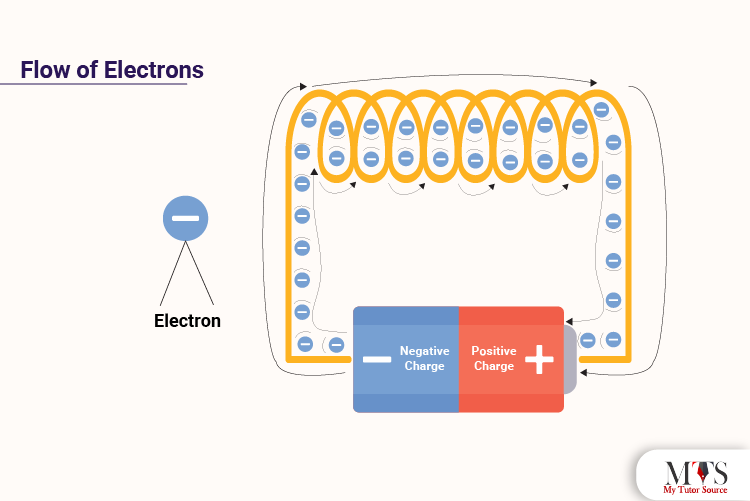
In a given field, when current is flowing from one point to another, there is a difference in the amount of charge between them. This potential difference between the two points in an electric field is known as voltage.
The SI unit for measuring the potential difference between two points or more commonly known as voltage, is volt, whereas the symbol used for voltage is V or E.
Current and voltage are closely related to each other. The more there is a potential difference between two points, the more there will be the current flow making the statement applicable that current is directly proportional to the voltage. Current increases with an increase in voltage and decreases when the voltage drops.
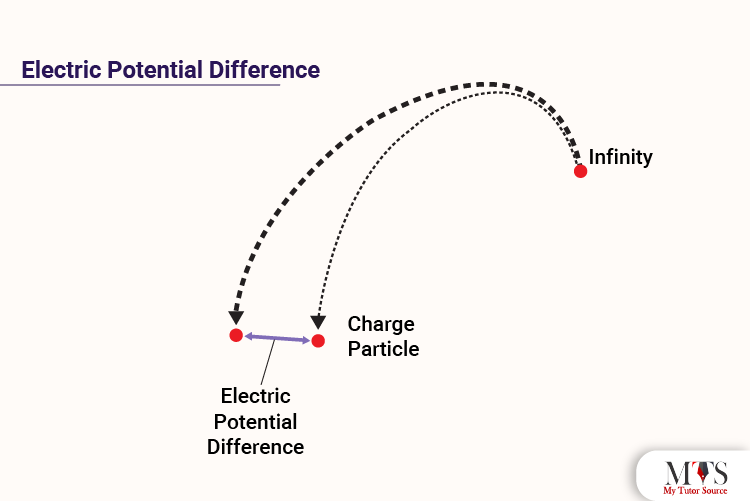
Resistance is basically the opposition or something that stops the current from freely flowing from one point to another. The SI unit used to express resistance is ohm with the symbol of a greek letter omega that is Ω.
There are a few factors that have an effect on the resistance of a circuit. Some of these factors are:
The resistivity of a material is its property or extent to which it provides resistance in a circuit. When the current is passing through a good conductor, the resistivity is rather low, but if the current is passing through an insulator or a bad conductor, the resistivity would be higher.
A circuit has many resistors present in it. It helps the electrical circuit to flow the current in the right amount according to the right requirement. If the current flowing is more than the required amount, then resistors come to work. Resistors stop the flow of extra current that is flowing in the circuit.
Since resistance works as a counter-response to the current flowing, the resistance of the circuit has an inverse relationship with the current and voltage in the circuit. The more resistance there is present in the circuit, the lesser amount of current will be flowing through it, and lesser the resistance means more electrons will be allowed to flow freely hence more electric current.

Suppose there’s an electric heater present with a resistance of 120 Ω and a current of 5.6 Amp flowing through it. You are to determine the potential difference across the circuit. State your answer.
Solution
Here we have
Current-I = 5.6 Amp
Resistance-R = 120 Ω
Voltage- V = ?
By applying the general formula of ohm’s law
V= IR
By putting the values in the formula
V= 5.6 x 120
V= 672 volts.
From the above solution, we have found that the voltage in the given circuit is 672 volts.
Solution 2
In the same equation, if we knew the voltage and current and we were to find out the resistance, this is how the solution of the problem would go.
Here we have
Current I = 5,6 Amp
Voltage = 672 volts
Resistance = ?
By applying the formula
R= V/R
By putting the values in the formula, we get
R= 672/5.6
R= 120 Ω
As ohm’s law helps us to determine the value of electrical factors, including current, resistance, and voltage., we can use it to determine the measure of high or low voltage where required. When a current passing through the circuit is more than its requirement, it indicates that either the resistance has lowered down or the voltages have gone up as per ohm’s law.
Similarly, a decreased amount of current or power would indicate that the resistance has been increased in the circuit or the voltages have gone down. This could be due to bad connectivity or some damage to the appliance.
An increase in the voltage increases the current flow or the electricity being supplied. In this way, we use ohm’s law to indicate that there is an issue in the circuit. In this way, ohm’s law helps us in finding the voltage quantities.
Usually, an energy plate or tags are added to an appliance to make known its usual amount of current or power. During an issue with the appliance, it is tested for the amount of current, and if it is found to be unusual, the root cause of the issue is determined through the difference in the values as to how much they are and how much they should be.
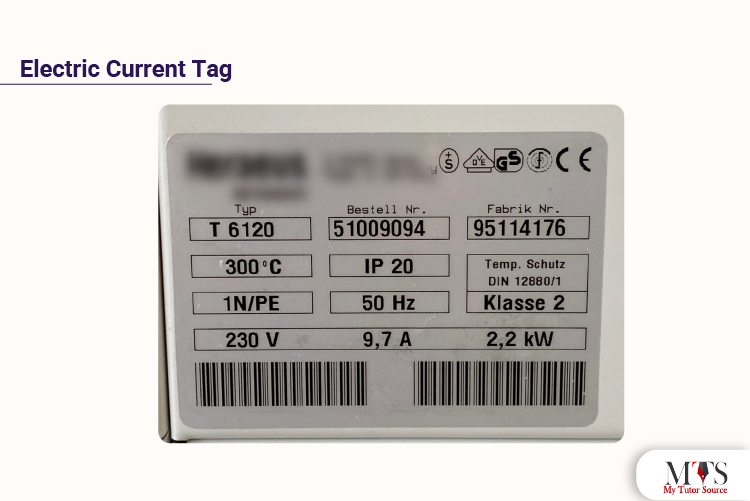
There has been an established way of using the ohm’s law triangle to help memorize the fundamental components of an electric circuit and the relationship between them that facilitates or restricts the flow of current. The ohm’s law triangle consists of a pyramid-like structure that contains the main components of ohm’s law.
The top portion of the ohm’s law triangle contains the voltage (V), and the lower half is divided into two parts. One contains the current, while the other contains the resistance. Usually, the current is kept on the left part of the division, whereas the resistance is kept on the right part.
This is how the mathematical representation V=IR of the three components is represented in the form of a triangle.
This triangle is the perfect guide to help you memorize the fundamentals of ohm’s law. With the triangle, you would always know that the voltage comes on top, so if the voltage is known with the resistance, you can find out the current by dividing the resistance from the voltage. If the voltage and current are known, then you can find out the resistance by dividing the current from the voltage.
On the other hand, if resistance and current are known, then the voltage can be found by simply multiplying the resistance and the current.
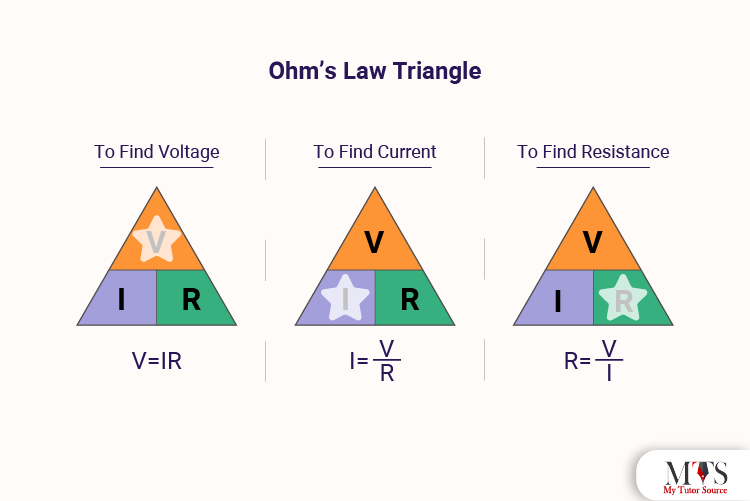
When a light bulb is added to an electric circuit, it will light up. As we increase the voltage of the given circuit, the flow of current will increase, and in this way, it will increase the brightness of the bulb. A brighter bulb indicates that there is a higher value of voltages present, whereas a dim bulb indicates that low voltages are present.
Common values for the voltage of a light bulb are usually 120V or 130V. We can examine the effect of voltage by decreasing the number. If we are using a light bulb with only 60V voltage provided to it, the bulb will not light up as bright as it would when the bulb is provided with 120V. In this way, the power of a bulb is affected by the effect of voltage supplies.
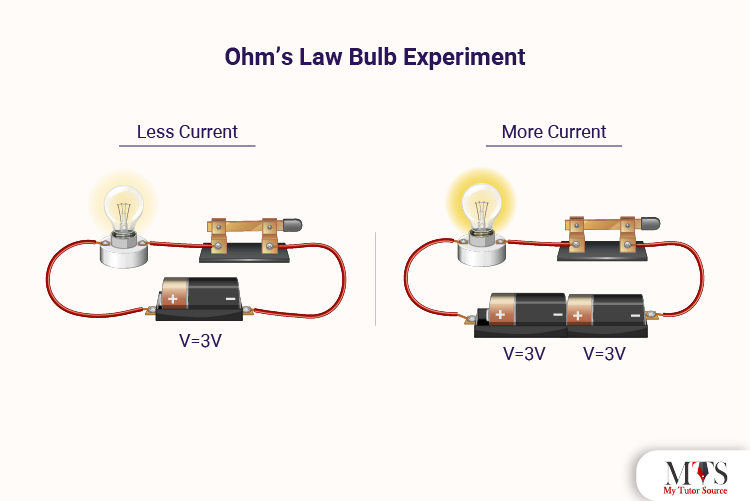
Ohm’s law helps to determine different aspects of a circuit, including the amount of current flowing through the circuit, the voltage and potential difference present between the two given points, and the resistance present in it. We can use this information to be applicable in many daily life activities. Let’s discuss some of the ways that ohm’s law becomes applicable in our daily lives.
Here are some of the limitations that prove the usage of ohm’s law wrong to an extent:
Not all electrical devices or appliances work in accordance with the application of ohm’s law. The devices that obey the principles of ohm’s law are known as ohmic devices, whereas the devices that do not obey the principles of ohm’s law are known as non-ohmic devices.
The ohmic conductors include the ones that exhibit a linear relationship between the current and voltage in the way that if the voltage of the conductor is increased, the current will increase as well. Examples of ohmic conductors include metal conductors or copper wire.
The non-ohmic conductors are the ones that do not show a linear relationship between the voltage and current in the way that the increase in the voltage does not have a direct effect on the quantity of current flowing through the conductor. Examples of non-ohmic conductors include electrolytes and diodes.
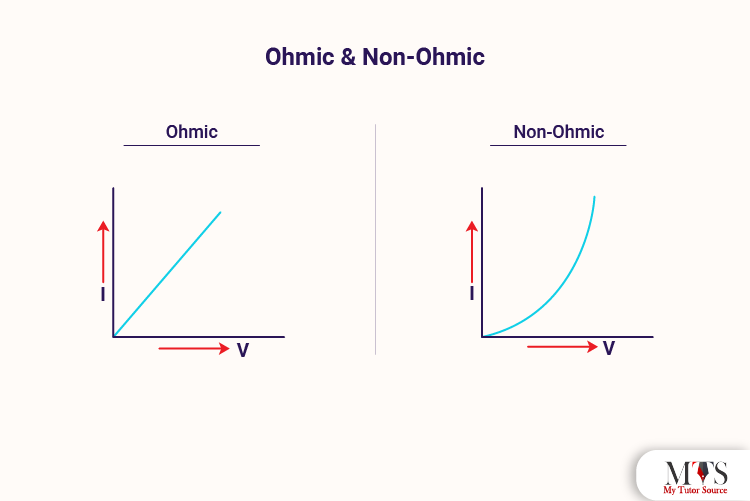
As per ohm’s law, there is a relation between the current, voltage, and resistance in a particular circuit. The current and voltage are directly proportional to each other in the way that as the voltage increases, the current increases as well. On the other hand, the current and voltage have an inverse relation with the resistance in the way that as the resistance increases, the voltage and current come down.
This principle of ohm’s law has many uses in our daily life. Do you wish to study the aspects of physics thoroughly and with more clarity? Our private physics tutors offer the perfect guidance to get a strong grip on the subject.